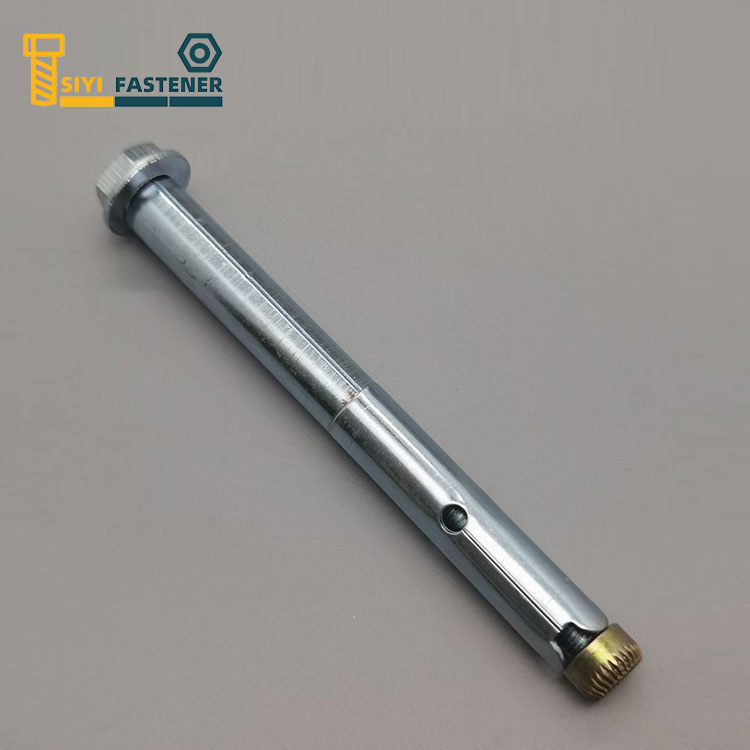Unveiling Stability: The Ingenious Expansion Mechanism of Zinc Plated Sleeve Anchors
2023-11-21
Introduction:
In the world of construction and industrial anchoring, the reliability of fastening solutions is underpinned by the efficacy of their design. Zinc Plated Sleeve Anchors, distinguished by their versatility and durability, boast an ingenious expansion mechanism that forms the core of their anchoring prowess. In this exploration, we delve into the inner workings of the expansion mechanism, unraveling how Zinc Plated Sleeve Anchors achieve a secure and reliable anchor point.
The Components of the Expansion Mechanism:
1. Threaded Stud:
- At the heart of the expansion mechanism is the threaded stud, a cylindrical rod that extends from the anchor head. This threaded stud penetrates the base material during the installation process, serving as the anchor's primary point of contact with the substrate.
2. Cylindrical Sleeve:
- Wrapped around the threaded stud is the cylindrical sleeve, a key player in the expansion mechanism. Typically made of materials like carbon steel or stainless steel, the sleeve is strategically designed to undergo deformation when subjected to tightening forces.
3. Nut:
- The third crucial component is the nut, threaded onto the stud. The nut serves as the means of applying torque to the threaded stud during the installation process. As the nut is tightened, it compresses the sleeve against the walls of the drilled hole, initiating the expansion of the anchor.
The Expansion Process:
1. Drilling the Hole:
- The installation process begins with drilling a hole into the base material, matching the diameter of the Zinc Plated Sleeve Anchor. The hole's depth corresponds to the recommended embedment depth for the specific anchor size.
2. Inserting the Anchor:
- With the hole prepared, the Zinc Plated Sleeve Anchor is inserted, ensuring that the threaded stud extends beyond the surface of the base material.
3. Hand-Tightening the Nut:
- The nut is hand-tightened onto the threaded stud until it is snug against the anchor head. This initial tightening positions the anchor within the hole and sets the stage for the expansion process.
4. Torque Application:
- Using a wrench or socket wrench, the nut is further tightened, applying torque to the threaded stud. As torque is applied, the sleeve undergoes compression, reducing its diameter.
5. Sleeve Expansion:
- The reduced diameter of the sleeve allows it to expand radially, pressing against the walls of the drilled hole. This radial expansion creates a secure and tight fit within the base material, forming a reliable anchor point.
Achieving Stability and Reliability:
1. Mechanical Interlock:
- The expanded sleeve creates a mechanical interlock with the base material. This interlock resists both axial and shear forces, providing stability and preventing the anchor from being pulled out or rotating.
2. Uniform Expansion:
- The design of the Zinc Plated Sleeve Anchor ensures uniform expansion along the entire length of the sleeve. This uniformity contributes to the anchor's load-bearing capacity and reliability in various applications.
3. Corrosion Resistance:
- The zinc plating on the anchor's surface not only enhances corrosion resistance but also plays a role in the expansion mechanism. The corrosion-resistant layer protects the anchor's surface, preserving the integrity of the expansion mechanism over time.
Conclusion:
The expansion mechanism of Zinc Plated Sleeve Anchors is a marvel of engineering, relying on the interaction of the threaded stud, cylindrical sleeve, and nut to create a secure and reliable anchor point. As construction and industrial projects unfold, the intricate dance of these components ensures stability, durability, and anchoring excellence in a variety of base materials and applications.



